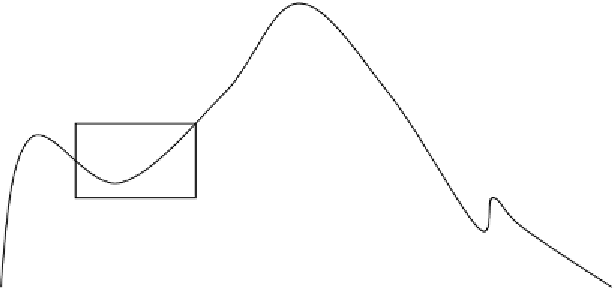Image Processing Reference
In-Depth Information
Figure 7.16
Aperture filter. (a) Aperture placed on the signal. (b) Quantized samples within
the aperture.
combinations. As well as extending the windowing property to the signal ampli-
tude, the aperture filter also extends the concept of translation invariance to the ver-
tical direction since training data is combined from apertures placed at different
levels.
In the same way, many of the input patterns within the aperture may be com-
bined in training if they differ by only an offset. In this case, the aperture output
value falls between + 3 and - 3. In theory, the output does not have to be clipped.
Although the design procedure is developed with a clipped output
Y*
, in the next
few paragraphs it could theoretically work with the unclipped values of
Y
.
Like all filters in this class, aperture filters are designed using a training set con-
sisting of ideal and corrupted versions of the signal. A window constrained in both
the amplitude and the domain of the signal is used to collect the data. The constraint
in the range means that certain signal values that fall outside the amplitude range
K
=[
-k, k
] of the window are “clipped” to the top or the bottom value of the window
range. Equation 7.16 gives the function mapping each point
X
j
of the original ob-



























